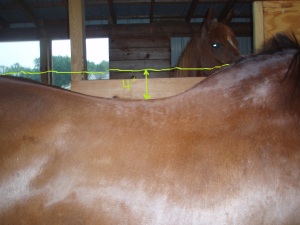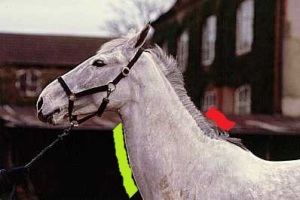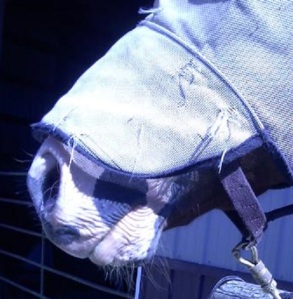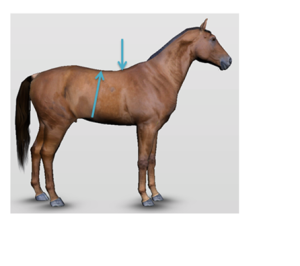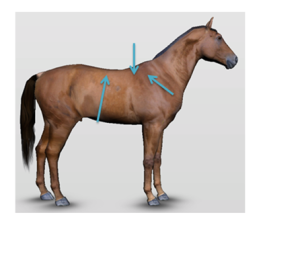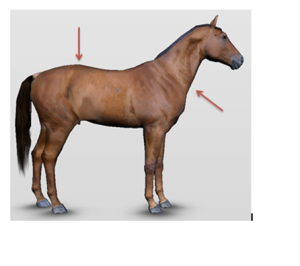So many times in our rushed world we forget to look for the smallest signs of trouble. We only become aware of them after they are “Monsters”. Since I see a variety of horses every week I thought I would document some of the more common pain signs I see.
Pain is not usually the issue that the owners called me for. Mostly it is “He wont take a lead.” or “He is falling out of the circle” or “He’s knocking over the barrels”. Once I look at the horse I usually see many signs of pain. So I put together this short list of the obvious ones.
I’m sure the list will grow as I get more/better pictures.
- Wither “Pockets” – Hollows behind the shoulders
This is where the muscles have atrophied from the horse trying to avoid a poorly fitted saddle.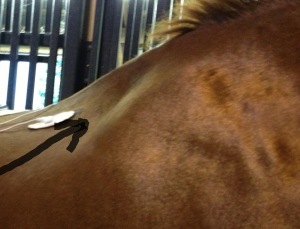
- Hollow Flanks – Sides are concave behind the ribs. Not from lack of food or being underweight.
- Butt Muscles are angular not smoothly rounded
The red line shows how the butt muscles are over contracted creating the angle. The Green line shows which muscles are the primary culprit in this situation. 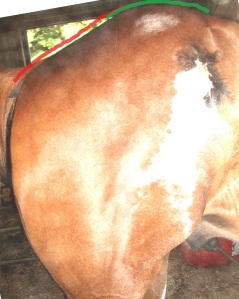
- Inverted Topline or sway back are signs of saddle fit pain or improper use of the rear end. This only applies to breeds without genetic markers for sway back (saddlebreds, etc.).
A horse in good condition with regular exercise and properly using their butt should have no more than a 3″ drop in the back and will frequently have less than 2″.
- Ewe Necked – is almost always present when sway back is present.
The red line is what is commonly presented as the being ewe necked. The appearance is that the neck is set too low on the shoulder. This is rarely true. What normally happens is that the underside of the neck (green line) is over developed to the point that you may not even be able to see the carotid groove.
When the head goes up, the neck needs to flex at the shoulder and the back goes down. Pesto-change-oh and you have a “ewe neck”. Get the muscles of the back into proper work and most of the neck issues go away.
- Pursed Lips – The lips are held tightly together. The teeth can be gritted together. Look for the wrinkles on the lips – sour puss face.
The more wrinkles the higher the pain. The deeper the wrinkles the longer the pain has been around. These Lips look like he was sucking on sour grapes.
- Contracted Muscles – Hard muscle bands or spasms – Never relaxes all muscles
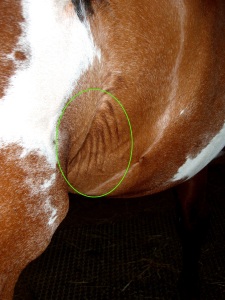
It is not just a sweat pattern in the area circled. The muscles circled are actually in contraction. He is not able to relax this area.
- Skin doesn’t slide across the muscles smoothly but is stuck in place. This can be over bones or over other muscles. This means that the fascia that the skin should slide over has stuck to the skin. This prevents full extension/contraction of the muscles underneath the stuck fascia.
